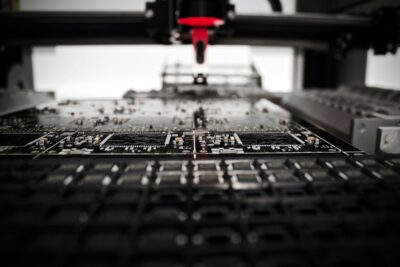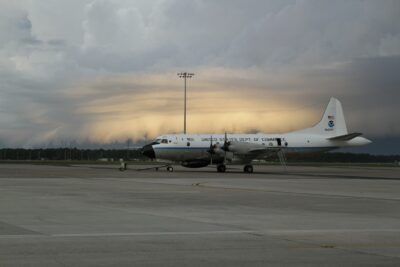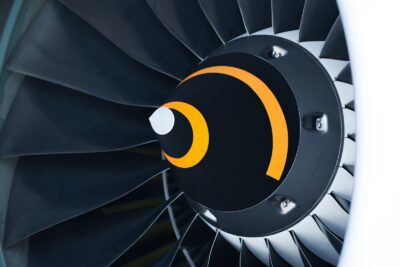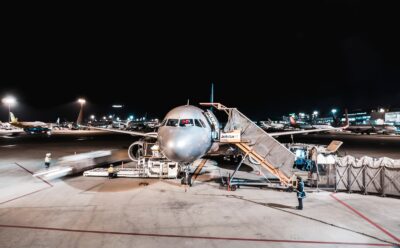The Role of Composite Materials in Modern Aircraft: Enhancing Performance and Efficiency
Introduction to Composite Materials in Aircraft
Composite materials have revolutionized the aerospace industry, playing a critical role in the construction of modern aircraft, including commercial airliners and military jets. These materials, typically made from a combination of fibers (like carbon or glass) and a matrix (such as epoxy resin), offer a unique blend of strength, lightness, and durability. Composite materials in modern aircraft are essential for developing more efficient, reliable, and versatile air vehicles, aligning perfectly with the ambitious technological visions of countries like Saudi Arabia and the UAE.
In the aviation sector, the use of composites has expanded dramatically over the past few decades. Historically, aircraft were constructed primarily from aluminum and steel, which, while strong, are relatively heavy. The advent of composite materials has allowed engineers to reduce the weight of aircraft significantly, leading to improved fuel efficiency, greater range, and lower operational costs. This shift is particularly relevant for regions like Riyadh and Dubai, where burgeoning air travel demands and the need for sustainable practices are paramount.
The benefits of composite materials extend beyond mere weight reduction. These materials exhibit superior fatigue and corrosion resistance, which enhances the longevity and safety of aircraft. For instance, composite components in the wings, fuselage, and empennage are less prone to crack propagation and environmental degradation compared to their metal counterparts. This increased resilience translates to fewer maintenance requirements and longer service intervals, making them an economically attractive choice for airlines and military fleets alike.
Commercial Airliners: Efficiency and Sustainability
In the realm of commercial aviation, the integration of composite materials has been a game-changer. Aircraft such as the Boeing 787 Dreamliner and the Airbus A350 XWB are prime examples of modern airliners that heavily rely on composite structures. These aircraft feature composite wings, fuselage sections, and empennages, which together account for a substantial portion of their total structural weight. The result is a significant reduction in fuel consumption—up to 20% compared to previous-generation aircraft.
For Saudi Arabia and the UAE, which are rapidly expanding their aviation sectors, the use of composite materials aligns with broader sustainability goals. Airlines operating in these regions benefit from the lower operating costs associated with more fuel-efficient aircraft. Additionally, the reduction in carbon emissions supports national and global environmental initiatives, reflecting a commitment to sustainable development and innovation.
Moreover, the advanced manufacturing techniques required to produce composite components—such as automated fiber placement and resin transfer molding—are fostering local expertise and industrial growth. In cities like Riyadh and Dubai, investments in aerospace technology and manufacturing capabilities are creating high-tech jobs and driving economic diversification. These advancements position the region as a key player in the global aerospace industry, contributing to the vision of transforming into knowledge-based economies.
Military Jets: Performance and Tactical Advantages
In the military aviation sector, the adoption of composite materials provides critical performance and tactical advantages. Modern fighter jets and other military aircraft require exceptional agility, speed, and stealth—attributes that are significantly enhanced by the use of composites. Materials like carbon fiber-reinforced polymers (CFRPs) offer high strength-to-weight ratios, enabling military jets to achieve greater maneuverability and higher speeds while maintaining structural integrity.
For countries like Saudi Arabia and the UAE, which have invested heavily in advanced defense capabilities, the use of composite materials in military jets is a strategic asset. Enhanced aircraft performance translates to superior air superiority and tactical flexibility. Additionally, the reduced radar cross-section of composite-based airframes enhances stealth capabilities, providing a critical edge in modern warfare scenarios.
The durability and damage tolerance of composite materials are particularly valuable in military applications, where aircraft often operate in harsh environments and under extreme conditions. The ability of composites to withstand impact and fatigue without significant loss of performance ensures that military jets can endure rigorous operational demands with minimal downtime. This reliability is crucial for maintaining a state of readiness and operational effectiveness.
Future Trends in Aerospace Composites
As the aerospace industry continues to evolve, the role of composite materials is expected to grow even further. Researchers and engineers are exploring new composite formulations and manufacturing techniques to push the boundaries of what these materials can achieve. Innovations such as thermoplastic composites, which offer improved recyclability and ease of manufacturing, are on the horizon, promising to make future aircraft even more efficient and environmentally friendly.
In Saudi Arabia and the UAE, ongoing investments in research and development are likely to yield significant advancements in composite technologies. Collaborative efforts between local universities, research institutions, and global aerospace companies are fostering innovation and knowledge transfer. This synergy is essential for developing next-generation aircraft that meet the specific needs and aspirations of these dynamic regions.
Moreover, the integration of other emerging technologies, such as artificial intelligence (AI) and blockchain, with aerospace composites is set to enhance the manufacturing and operational processes. AI-driven design optimization can lead to lighter and stronger composite structures, while blockchain can ensure the traceability and authenticity of composite materials throughout the supply chain. These technological intersections will further elevate the aerospace industry’s capabilities, driving efficiency and reliability to new heights.
Conclusion: Embracing the Composite Revolution
In conclusion, composite materials are indispensable in the modern aerospace industry, offering unparalleled advantages in performance, efficiency, and sustainability. For commercial airliners, the use of composites translates to lower fuel consumption and reduced emissions, aligning with global and regional environmental goals. In military jets, these materials enhance agility, speed, and stealth, providing a tactical edge in defense operations.
Saudi Arabia and the UAE are at the forefront of adopting and advancing aerospace composite technologies. Their investments in research, manufacturing, and innovation are driving economic growth and positioning them as leaders in the global aerospace market. As the industry continues to evolve, the role of composite materials will undoubtedly expand, paving the way for even more advanced and efficient aircraft.
By embracing the composite revolution, these regions are not only enhancing their aviation capabilities but also contributing to a more sustainable and technologically advanced future. The ongoing development and application of composite materials in aerospace will shape the next generation of aircraft, reflecting the ambitious visions of Saudi Arabia and the UAE in the 21st century.
—
#CompositeMaterials, #ModernAircraft, #AerospaceInnovation, #CommercialAirliners, #MilitaryJets, #SaudiArabia, #UAE, #AerospaceTechnology, #Riyadh, #Dubai























